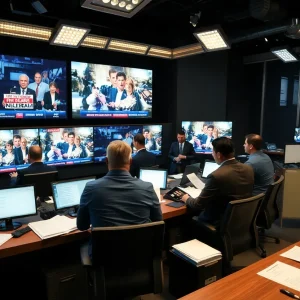Kansas City to Bring Back Traffic Enforcement Cameras for Safety
In a significant move aimed at improving road safety, Kansas City has announced plans to reinstate traffic enforcement cameras after more than a decade of suspension. The City Council has approved an ordinance that will bring back an automated camera system to catch drivers running red lights and speeding, addressing the growing concern over traffic-related deaths in the area.
Why the Change?
This initiative comes at a crucial time, as traffic deaths in Kansas City are on the rise. In 2020, the city recorded a staggering 103 traffic fatalities, a number that was narrowly matched last year with 102 deaths. As of now, 67 traffic-related deaths have already been reported this year, indicating that the city is on track to potentially surpass these alarming figures if action isn’t taken.
During a Special Committee for Legal Review meeting, Mayor Quinton Lucas emphasized the urgency of this initiative, stating that the increase in fatalities is closely linked to factors such as non-seat belt usage and excessive speeding. “With limited traffic officers available to monitor the streets, this system is a temporary solution to provide additional speed enforcement in problem areas,” Lucas explained.
History of Red-Light Cameras in Kansas City
Kansas City first introduced its red-light camera program in 2009, operating 29 cameras across 17 high-risk intersections. However, following a Missouri appeals court ruling in 2013 that deemed most similar ordinances unconstitutional, the city was forced to suspend the program. Subsequent rulings by the Missouri Supreme Court affirmed that the previous handling of red-light tickets was flawed, particularly regarding how violations were categorized.
A New Approach to Traffic Violations
With advancements in technology, the new traffic enforcement cameras will operate more effectively than before. According to Gavri Schreiber, general counsel for Mayor Lucas, the cameras will now capture both the driver and the vehicle’s license plate. This dual capability allows for linking the photo of the driver to their driver’s license records, ensuring that the person behind the wheel is accounted for when a violation occurs.
The ordinance approved by the City Council will treat violations captured by these cameras as moving violations, similar to if a police officer had pulled the driver over. Points will be assigned to the driver’s record, which is a significant change from how previous violations were treated.
Funding and Implementation
One of the key aspects of the ordinance is the allocation of revenue generated from the fines. The funds will cover the operational costs of the traffic enforcement system, with any remaining money earmarked for traffic safety improvements and initiatives like the Vision Zero projects aimed at eliminating traffic deaths.
Before the cameras can become operational, the city will request proposals to find a vendor for the system. Additionally, the Board of Police Commissioners must approve the agreement that enables the city to manage the automated enforcement cameras. The City Council will also play a role in determining where the cameras will be positioned, based on data related to crashes, traffic violations, and community input.
Looking Ahead
In anticipation of the new enforcement system, the city’s public works department is required to launch an awareness campaign 60 days prior to the cameras being activated. This initiative will help educate the community about the changes, ensuring that drivers are aware of the new measures in place.
With growing concerns over road safety, the return of traffic enforcement cameras in Kansas City represents a proactive step to enhance public safety. As the city moves forward with this initiative, residents can expect increased accountability on the roads, ultimately aiming for safer travel across Kansas City.







